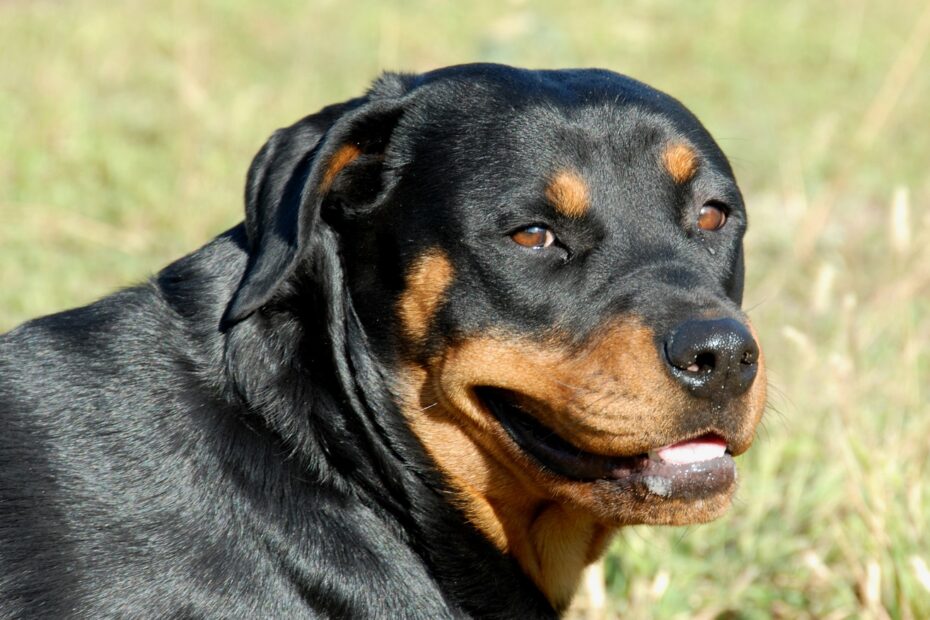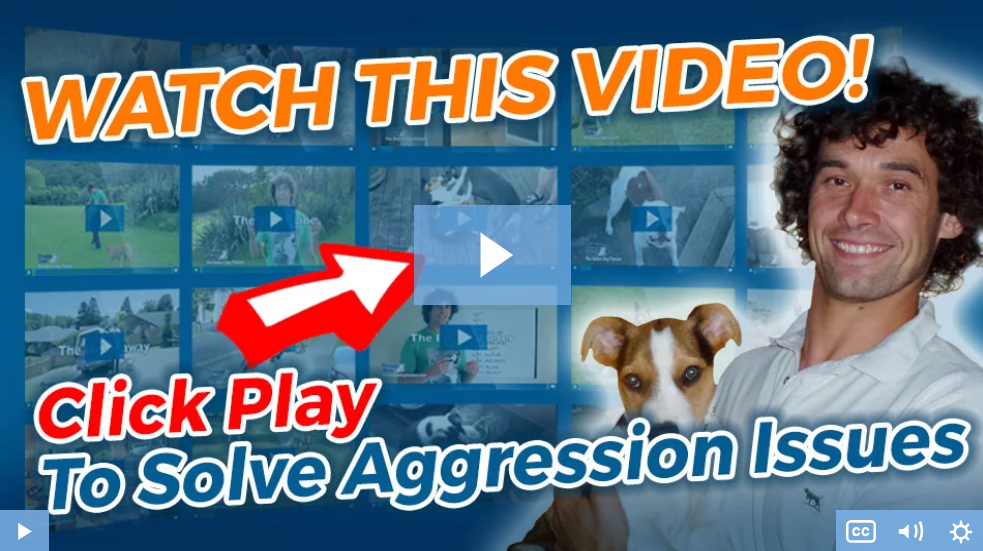Dealing with any kind of aggressive dog is no one’s idea of fun, but dealing with an aggressive Rottweiler is a whole other ball game.
Rottweilers can make great, gentle companions, but let’s get real. This is a dog with a bite force of around 300 pounds of pressure. To put that into perspective, Pitbulls have a bite force of just 230 pounds of pressure.
Obviously, they won’t bite with that amount of force on each and every occasion, but trust me… if they feel provoked or threatened, the last place on earth you’ll want to be is in the line of fire.
A Chihuahua that lunges and snaps isn’t particularly pretty to deal with. But ultimately, there’s a limit to how much damage they can do. Rottweilers don’t have that limit. If they attack, the consequences can be lethal.
None of this is intended to scare you. But it is intended as a call of action. If your Rottweiler is showing any hint of aggression, then you need to act, and you need to act now.
Fortunately, most cases of aggression can be managed with the right strategy. To figure out what that strategy is, you’ll first need to establish exactly what’s motivating the aggression.
But before we come to that, I’ve got a recommendation for you. It’s called the Dog Calming Code, and it’s been specially put together by Dan Abdelnoor over at the Online Dog Trainer to help calm aggression, encourage focus, and teach emotional control. (see video below)
If you’ve tried other methods but nothing seems to be working, this could be the missing piece in the puzzle.
Here’s the video link to take a look: Click Here To Discover How To Finally Stop Your Rottweilers Dangerous, Scary Aggression Problem… Even If You’ve Tried & Failed Before!
(video will open in new window)
What Makes Rottweilers Aggressive?
Aggression is a behavioral characteristic that can affect any breed, from the tiniest Terrier to the biggest Great Dane. But what are the usual explanations for aggression in Rottweilers?
Although every dog is an individual, some of the most common causes for Rottie aggression include…
Bad Parenting
We’ve all seen the news reports, and we all know that Rottweilers are big, bad, and dangerous to know. The thing is, they aren’t… unless we make them that way.
With proper training, care, and socialization, Rotties have as much chance of growing into loving, gentle dogs as any other breed. If they don’t get those things, or if those things are replaced with abuse and neglect, then you can expect trouble.
Much of the problem lies in the mistaken belief that the only way to control a big dog like a Rottweiler is to use a firm hand – literally. It doesn’t work.
Dogs, whether they’re Rottweilers or otherwise, will respond to aggressive training tactics and repeated ill-treatment by becoming anxious, stressed, and, more often than not, prone to lashing out.
Resource Guarding
All dogs love their food, but some love it just a little too much for comfort. The same applies to toys and even people.
If your Rottie has decided to attach a particularly high value to its dinner bowl or anything else, they’re not going to be too pleased if someone gets between them and it.
If there’s any question in your dog’s mind that their prized possession is in danger of being snatched away from under their nose, they’ll do what they have to to protect it.
Dominance
Rotties, like all dogs, are pack animals. If there’s any doubt in their mind about who the leader of the pack is, and if they think they’d be a good candidate for the position, they’ll use their heft to press home their advantage.
Usually, dogs will fight for dominance between themselves. In some cases, they might turn their attention on their owner if clear boundaries haven’t been established.
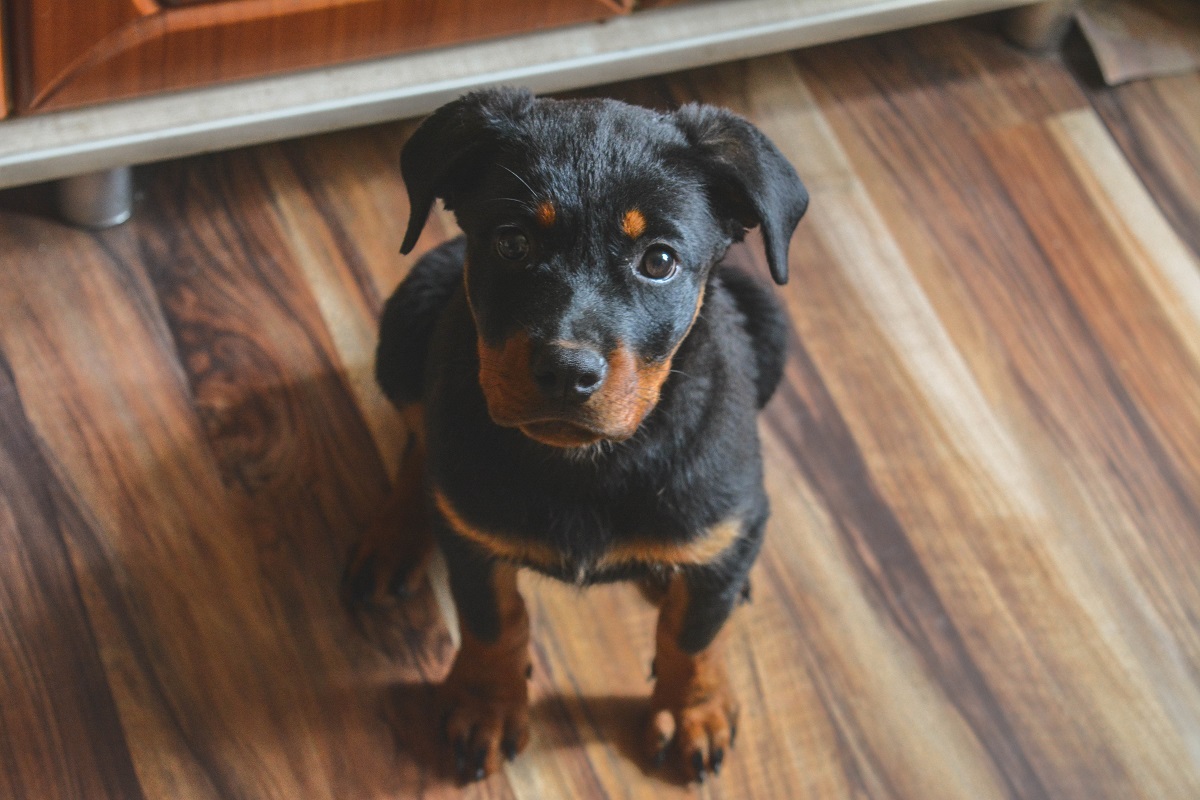
Stranger Danger
While Rotties can and do turn on their owners, it’s strangers that are most at risk from their unwanted attention.
The reason is simple enough: Rottweilers are naturally protective of their home and their family. If they feel either one is under threat (whether by a mailman walking across the yard or another dog owner on a walk), they’ll go into defense mode.
It might sound endearing (who doesn’t want to feel loved and protected?). But it’s problematic, especially when you’re dealing with a dog as big and powerful as a Rottie.
Anxiety Issues
Looking at a Rottie, you wouldn’t think the breed was given to anxiety issues. But don’t let their bulk deceive you. Like all dogs, they can develop fears, phobias, and anxieties, particularly if they haven’t been socialized properly.
If they come across a situation, sound, or face that’s shiny and new and all kinds of scary, they’ll usually try to escape. If flight isn’t an option, they’ll fight instead… or at least puff out their chest, bare their teeth, and look as intimidating as possible.
Frustration
Dogs are like kids, and like kids, they’re not immune from throwing their toys out of the pram when they can’t get what they want.
What they want could be anything from a cat up a tree to a dog in a neighboring yard. The object of their frustrations isn’t important; their habit of taking out those frustrations on the nearest innocent bystander very much is.
Pain
While most causes of aggression are behavioral, physical problems can also be to blame.
If they’ve picked up an injury, are under the weather, or are feeling dazed and confused from a cognitive complaint, they may lash out in stress and pain if they’re approached.
Related Post: How To Calm An Aggressive Dog – Simple Tips For Aggressive Behavior
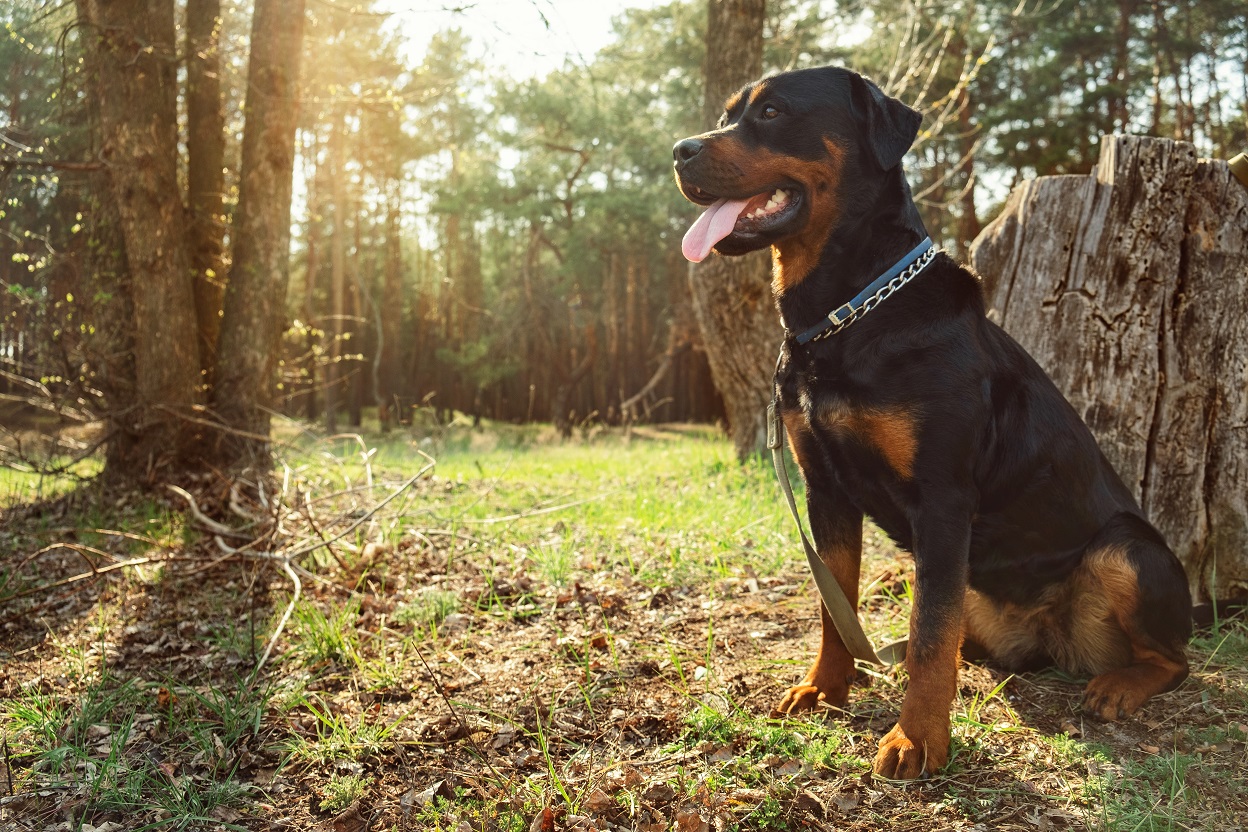
How to Calm an Aggressive Rottweiler
If your Rottie is displaying signs of aggression, the sooner you step in, the better. The consequences of uncontrolled aggression can be devasting, as much for your dog as for their victim.
Fortunately, there are plenty of things you can do to nip the problem in the bud, starting with taking a moment to check out the Dog Calming Code I mentioned a little earlier.
If you can implement the techniques Dan highlights, the end result will be a calmer, more controlled dog who’ll be far more inclined to pay attention during your training sessions than turn a deaf ear to them.
Once you’ve checked out the link, cast your eye over these helpful hints for cutting aggression.
Put Your Thinking Cap On
Root cause analysis…. it sounds like a lot of hard work, right? Fortunately, it’s not as hard as it seems.
The key is to simply take a good, long look at the context and circumstances surrounding your dog’s behavior.
Start by casting your mind back to when they’ve displayed signs of aggression in the past.
…Was food involved? …Toys?
…Do they get snappy around strangers?
…Do they freeze when they hear a car backfire, get nervy in new places, and anxious around strange faces?
While you’re at it, be honest about what training and socialization they’ve had up till now. If there’s been none, you could be looking at the cause of the problem (and the solution) right there.
If they’ve come from a shelter, think about any possible experiences they might have had in their past life that could still be casting a shadow.
You might not be able to fit all the pieces of the puzzle together, especially if they’re a rescue dog with a vague history. But try as much as possible – the more you understand their behavior, the easier it’ll be to address.
Call the Vet
If your Rottie has only recently started displaying signs of aggression, get them checked out by a vet as soon as possible.
Any number of health issues can result in undesirable behavior, ranging from thyroid problems to vision loss.
If you’ve noticed any other strange or uncharacteristic behaviors (a change in appetite, exercise fatigue, lethargy, etc), be sure to share the details with your vet to help their diagnosis.
Learn Their Language
In the vast majority of cases, a dog will give a few warning signs before they launch into a full-blown attack. If you can learn to recognize those signs, you stand a much greater chance of being able to jump in before things escalate.
If your dog is around food, strangers, other dogs, or in any situation that’s giving rise to aggression in the past, keep an eye peeled for…
- A stiff, rigid posture
- A wrinkled muzzle
- Bared teeth
- A low tail
- A fixed gaze
If you notice a sign, stop whatever’s happening and get your dog away from there before the trouble starts. As you lead them away, stay calm, controlled, and keep your voice low but firm. Any signs of panic will simply inflame the situation.
Get Social
A dog who’s never been socialized will almost certainly experience more behavioral issues than one who has.
Although puppyhood is the best time to socialize your Rottie, it’s never too late to start.
The aim of the game is to show them there’s nothing to be feared about the unfamiliar. So make it your mission to introduce them to as many new people, new places, and new things as possible.
Keep the introductions gentle and controlled, and be sure to go armed with a bag of treats to encourage positive associations.
Related Post: How To Socialize An Aggressive Dog – A Step By Step Guide
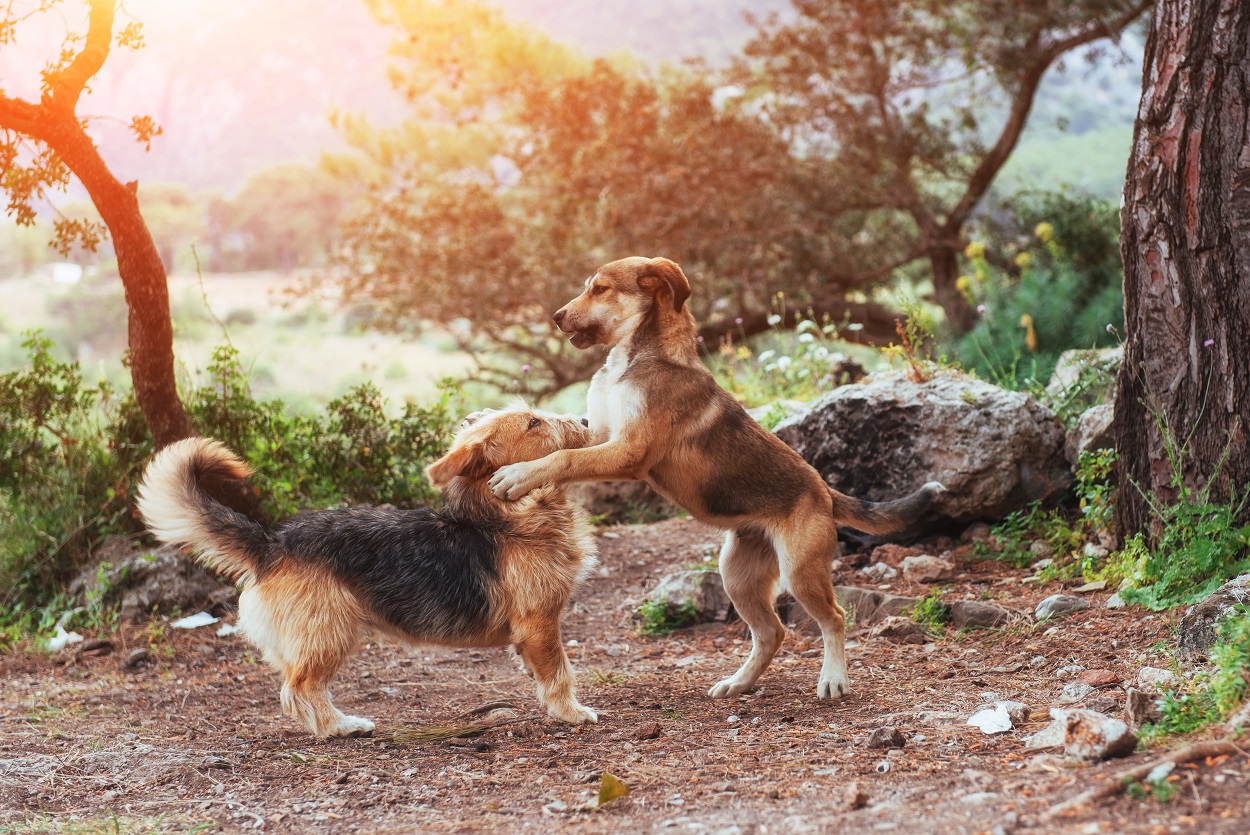
Control Their Envroment
This next tip won’t necessarily change your dog’s attitude, but it will help stop it from causing offense.
Think back to the root cause analysis you did a little earlier. What environmental factors did you identify as an issue?
If your Rottie’s territorial and protective instincts are triggered by guests coming into the house, consider putting them in another room before the guests arrive.
If they get possessive about food and toys, clear away any prized possessions before anyone arrives and warn people not to approach while they’re eating.
If they go berserk when they meet another dog on a walk, try walking in quiet areas during the least busy times of the day.
As I say, none of these steps will address the underlying cause of your dog’s aggression. They will, however, help control it while you work on the long-term measures to correct it.
Knuckle Down on Training
Rotties are capable of being amazing, affectionate companions, but like all dogs, they need a helping hand to get there.
If your training routine has been hit and miss so far, it’s time to knuckle down. An untrained, uncontrolled Rottie is no laughing matter – the sooner you get serious about their training, the sooner you can start moving past the aggression in a positive way.
Basic obedience training can be done by pretty much anyone, regardless of whether you’ve trained a dog before or not. If you feel overwhelmed at the prospect, consider signing them up for an obedience class.
To get the most out of your training sessions, remember to use the Dog Calming Code to encourage focus and concentration.
Encourage Emotional Control
All dogs are prone to impulsive behaviors from time to time, but that doesn’t mean it’s impossible to teach them emotional control.
The Dog Calming Code is an easy-to-follow, highly effective means of curbing undesirable behaviors.
It’s not rocket science, and you won’t need an advanced degree in animal behavior science to understand and implement the principles.
If your dog gets distracted during training, if they let their emotions run away with them, and if they laugh in the face of calm, this is the program to turn things around.
Get Some Exercise
Exercise isn’t a cure-all, but you’d be surprised at how effective it can be.
If you’re dealing with a bored, frustrated dog, something as simple as adding an extra walk into your day or a game of frisbee into your evening can make a huge difference to their attitude.
It may be a cliche, but a tired dog really is a happy dog.

Wrapping Things Up
Realizing your dog has the potential for aggression is never easy. But no matter how daunting it seems now, this isn’t something you just have to learn to live with.
Very, very few cases of aggression can’t be managed with the appropriate form of training, socialization, and behavioral modification.
Identify the cause, control their environment, encourage emotional control, and be consistent with training. It sounds easy. It’s not. It’s going to involve hard work and discipline, both from you and your dog. But it is doable.
